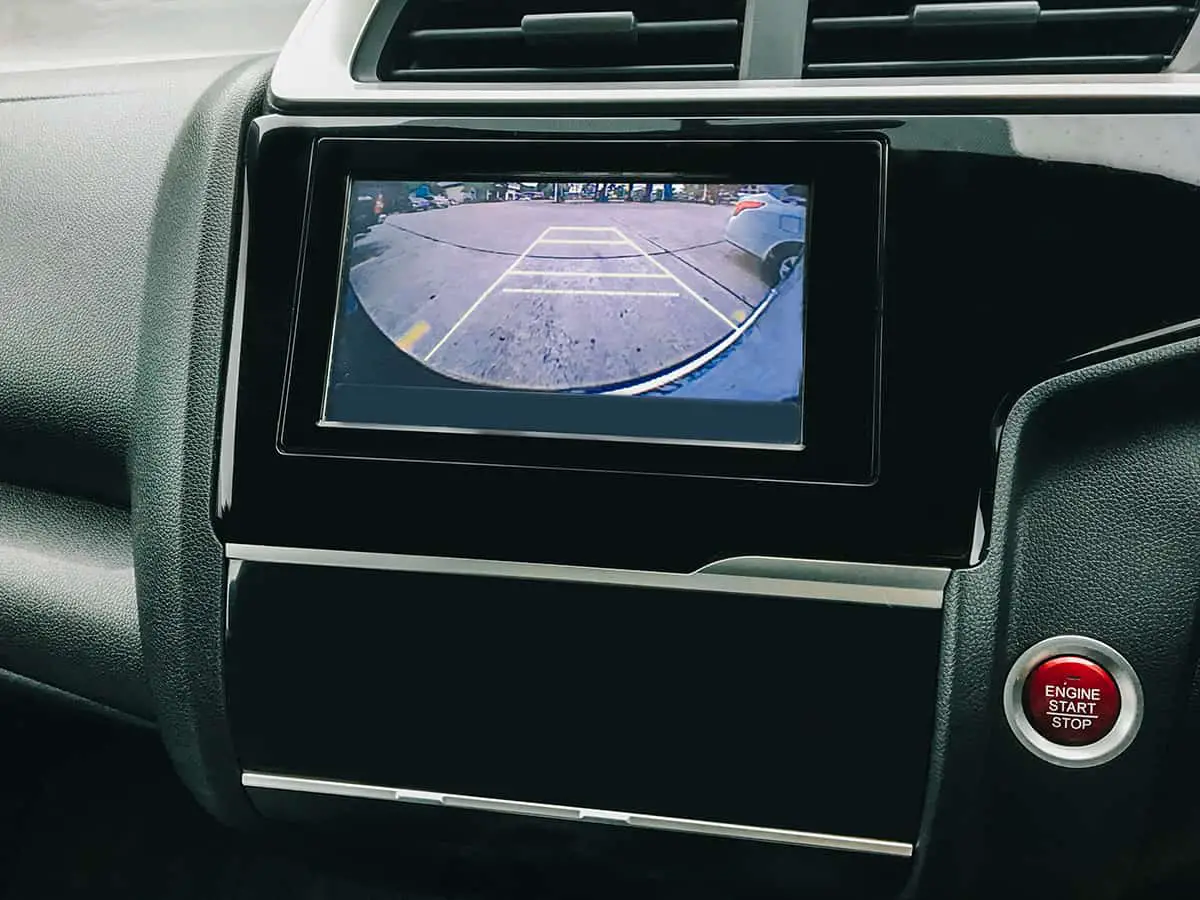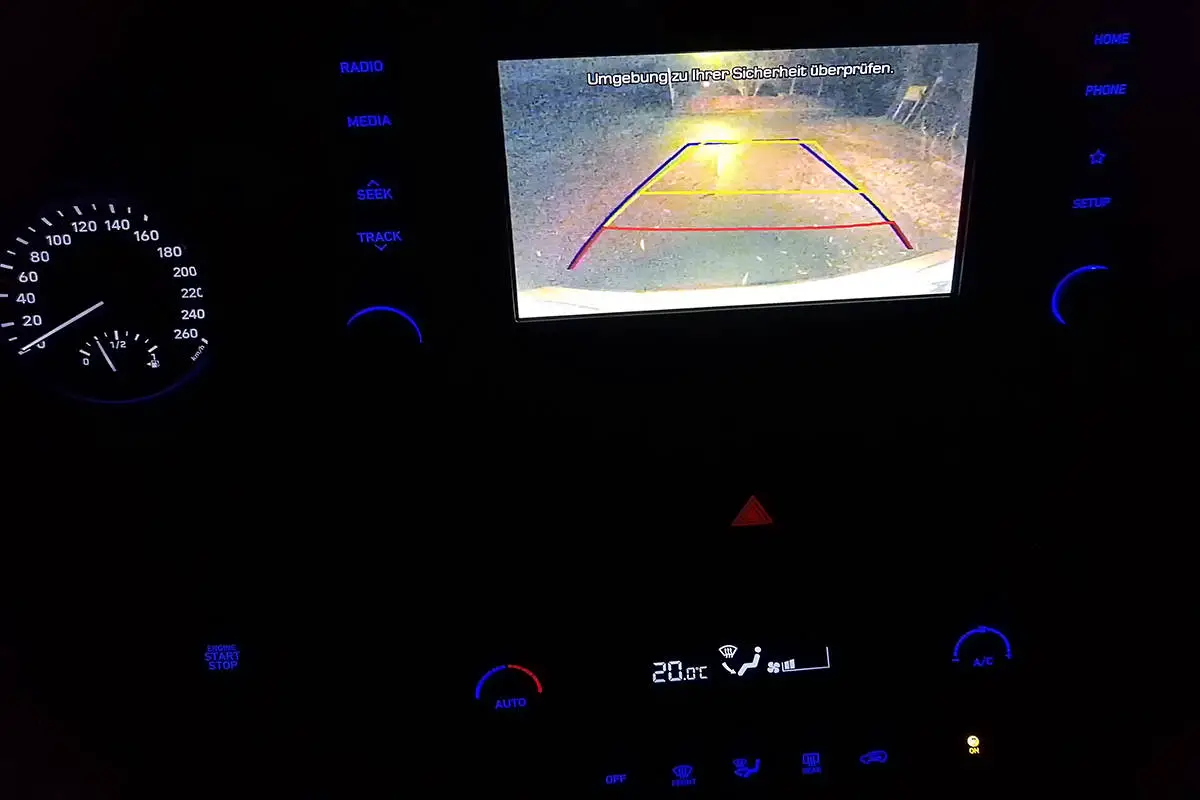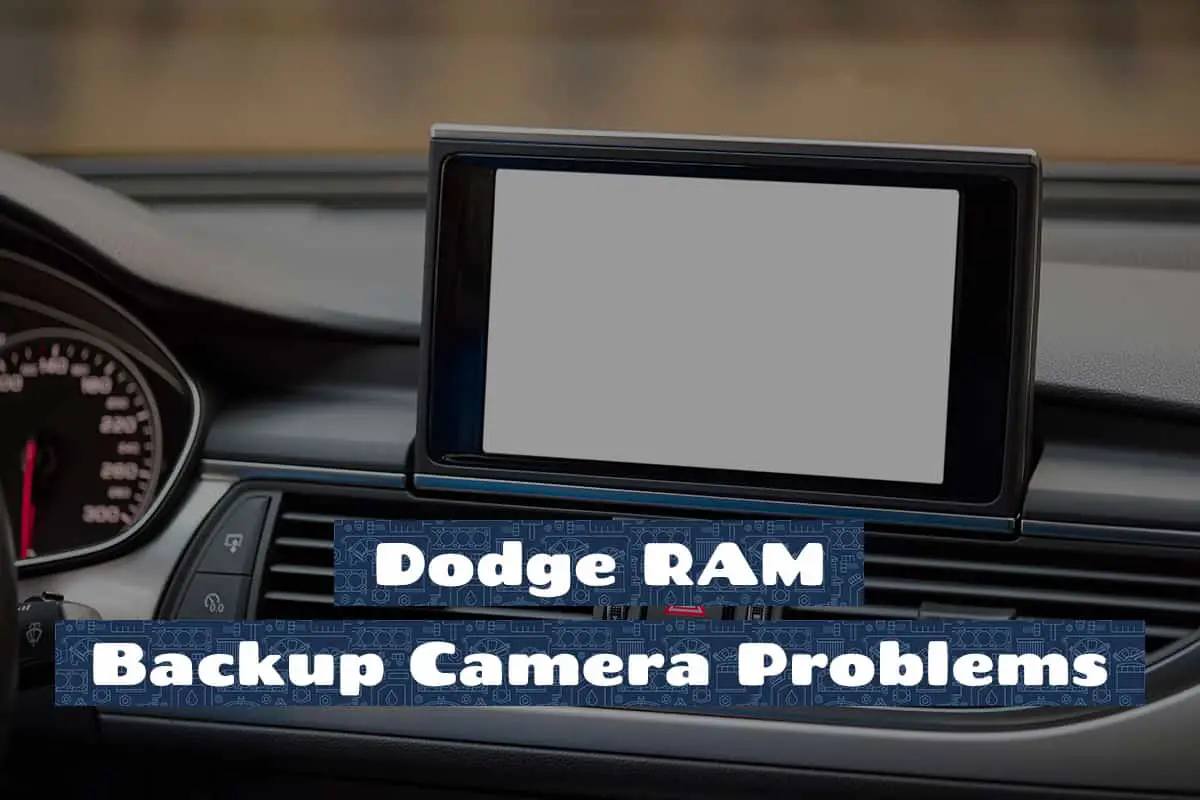Dodge RAM trucks are well-known for their durability and performance. Among the modern features these vehicles boast, the backup camera stands out for its role in enhancing safety during reversing maneuvers. A clear rear view is not just a convenience but an essential tool in preventing accidents.
Backup camera problems in Dodge RAM can arise from a myriad of causes including software glitches, faulty wiring, wear and tear, or even simple obstructions like dirt on the lens. Appropriate solutions range from cleaning to component replacement.
In this guide, we’ll dive deeper into why your backup camera matters and how to resolve various camera issues.
Why You Should Fix Your Backup Camera ASAP

Backup cameras have redefined driving safety. They provide a clear view of the area behind your vehicle, an area often blind to the naked eye. When this tool malfunctions, it compromises the safety and convenience it’s meant to offer.
1. Safety Concerns
Reversing a vehicle without a functional backup camera can expose you to various risks. Many accidents occur during reversing maneuvers because drivers can’t see obstacles, small children, or pets behind their vehicles.
2. Protect Your Vehicle
Without the backup camera, you risk bumping into barriers, curbs, or other vehicles. Such mishaps can lead to costly repairs, depreciating the value of your truck.
3. Ease of Parking
One of the undeniable benefits of a backup camera is the ease it brings to parking. Especially in tight spaces or busy lots, the camera becomes your eyes, ensuring you park seamlessly. With a non-functional camera, you might find parking more challenging and time-consuming.
Causes of Ram Backup Camera Problems
The longer you drive your Dodge Ram, the greater the chance something will go awry. As far as backup camera issues go, there are several culprits you can pinpoint your problems on.
1. Software Glitches
Today’s vehicles are tech-driven, relying on software for optimal performance. Sometimes, this software can have bugs or face issues that can affect the backup camera’s functioning.
2. Faulty Wiring
Wires are the lifelines of any electronic device, including your backup camera. Over time, wires can get frayed, disconnected, or corroded. External factors like moisture, heat, or physical damage can affect the wiring, leading to camera malfunction.
3. Camera Wear and Tear
Backup cameras are exposed to the elements—sun, rain, snow, and dust. This exposure can lead to wear and tear, ultimately affecting the camera’s performance. The lens might get scratched, or internal components might get damaged.
4. Obstructions on the Lens
Sometimes, the issue might be as straightforward as dirt, mud, or snow blocking the camera lens. This can result in blurry images or complete blockage. Ensuring that the camera lens is clean before you start driving can help avoid such issues. It’s a good habit to wipe down the lens, especially in muddy or snowy conditions.
5. Blown Fuse or Wiring Problems
Fuses are protective devices in your vehicle’s electrical system. If there’s an electrical overload, the fuse will blow to prevent damage to the system. If the fuse connected to your backup camera blows, the camera won’t function.
6. Display Malfunctions
The problem might not always be with the camera itself. Sometimes, the display screen inside your truck might be at fault. Issues can range from broken pixels to full-blown display malfunctions.
7. Camera Misalignment
If you notice that the camera’s view seems tilted or skewed, it might be a case of camera misalignment. This can happen after a minor accident, bump, or over time with general use.
8. Hardware Issues
On rare occasions, the camera or its associated components might be inherently defective. This can be due to manufacturing defects or issues during the installation process.
9. Outdated Software
Modern cars are basically large computers on wheels. As such, they rely on software to keep their in-built computers and all the related features functioning properly. The backup camera may not work if its software is outdated.
Common Problems Faced with Dodge RAM Backup Cameras (and Solutions)

The problems your Dodge Ram’s backup camera faces range from skewed displays to nothing appearing on screen at all. Here, we’ll go over common backup camera problems and what you can do to resolve them. Some of the following points may require a professional’s touch.
1. No Image Displayed on the Screen
If you shift your truck in reverse and the screen remains blank, there’s likely an issue.
Possible Causes:
- Disconnected or damaged wiring
- A blown fuse
- Camera or display malfunction
Solutions:
- Inspect the wiring for visible damages and ensure all connections are secure.
- Check the relevant fuse in the fuse box and replace it if necessary.
- If the camera and wiring seem fine, the issue might lie with the display. Consider consulting a professional.
2. Image Appears Blurry or Distorted
A foggy or warped image can make the camera almost as useless as having no image.
Possible Causes:
- Dirt, grime, or water on the camera lens
- Internal moisture buildup
- Damaged camera lens
Solutions:
- Clean the lens gently using a soft cloth.
- If internal condensation is the culprit, parking in a warm place can help evaporate the moisture. Alternatively, consider replacing the camera.
- A scratched or damaged lens might require a camera replacement.
3. Delay in Camera Activation
If the camera lags when activated, it can be disconcerting.
Possible Causes:
- Software-related issues
- Camera starting to fail
Solutions:
- Restarting the truck might resolve minor software hiccups.
- If the problem persists, consider updating the system software.
- If software solutions don’t work, the camera might be the issue and may need replacing.
4. Absence of Dynamic Gridlines
Dynamic gridlines aid in judging distances when reversing.
Possible Causes:
- Software glitches
- Camera misalignment
Solutions:
- Restart the truck’s system. If gridlines are still missing, a software update might be needed.
- If the camera appears misaligned, adjusting it to the correct position can bring back the gridlines.
5. Intermittent Black Screen
If the camera works sporadically, it can be puzzling.
Possible Causes:
- Loose wiring connections
- Overheating
Solutions:
- Secure all connections related to the camera and display.
- Ensure the camera is free from debris or anything causing it to overheat. If the camera still cuts out, consider getting it replaced.
6. Poor Visibility in Dim Conditions
Backup cameras usually have night vision, but if images appear too dark, there’s a problem.
Possible Causes:
- Malfunctioning infrared (IR) lights
- Ambient light issues
Solutions:
- Check if the IR lights around the camera lens are working. If not, they may need replacement.
- Ensure external lights, like license plate lights, are functioning, as they assist the camera in low light.
7. Colored Lines/Streaks on the Display
Lines on the screen can obstruct the view.
Possible Causes:
- Display issues
- Camera malfunction
Solutions:
- If the display works fine with other inputs (like navigation or media), the camera might be at fault.
- Consider replacing the camera or consulting a technician for a more in-depth look.
8. Camera View Too Bright or Washed Out
Overexposed images can be as challenging as dark ones.
Possible Causes:
- Incorrect settings
- Camera malfunctions
Solutions:
- Adjust the brightness and contrast settings on the display.
- If settings adjustments don’t help, the camera might be defective and require replacement.
9. Camera Doesn’t Activate at All
If the camera doesn’t turn on, it’s a clear sign of an issue.
Possible Causes:
- Faulty camera switch
- Software problems
Solutions:
- The switch that activates the camera when reversing might be defective. Check its functionality and replace if needed.
- Software resets or updates can resolve system-related issues affecting the camera.
10. Warning Messages on the Display
Occasionally, you might see warning messages related to the backup camera.
Possible Causes:
- Software errors
- Hardware malfunctions
Solutions:
- Note down the exact warning message and consult the vehicle’s manual or a professional for specific solutions.
- Some warnings can be rectified with software updates, while others might indicate hardware issues.
When to upgrade Your Dodge RAM Backup Camera
with the rapid advancements in technology, even the most reliable components might seem outdated after a while. Your backup camera is no exception. Here’s how upgrading can enhance can benefit you.
Consistently Poor Image Quality
If the camera feed is constantly grainy, blurry, or distorted despite regular maintenance and checks, it could be a sign of an aging camera. As technology improves, so does the resolution and clarity of newer camera models. Investing in an upgrade can ensure you get a crystal-clear view every time you reverse.
Lag or Delay in Activation
If your Dodge RAM’s camera takes a noticeable time to display an image after you shift into reverse, it might be lagging behind current standards. Newer models offer faster response times, ensuring immediate visuals when needed.
Absence of Advanced Features
The latest backup cameras come packed with features:
- Dynamic gridlines that adjust as you steer
- Integrated sensors for proximity alerts
- Enhanced night vision capabilities
- Integration with advanced infotainment systems
Persistent Malfunctions Despite Repairs
If you’ve had to repair your backup camera multiple times in quick succession, it might be more cost-effective to upgrade. Continual repairs can add up, and investing in a new, more reliable model can save both money and hassle in the long run.







